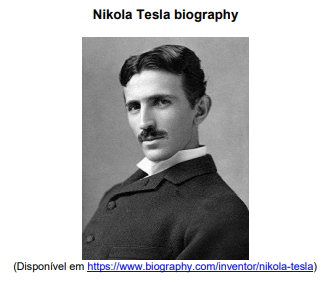Questões de Concurso
Foram encontradas 2.534 questões
Resolva questões gratuitamente!
Junte-se a mais de 4 milhões de concurseiros!
A: We X have any food.
B: I know. I Y buy some when the movie is over.
Choose the CORRECT alternative that corresponds to X and Y respectively.
Leia a frase e responda a questão subsequente.
He is quite awake.
Podemos classificar a palavra QUITE como um:
Leia a frase e responda a questão subsequente.
He is quite awake.
Podemos classificar a palavra AWAKE como um:
He might drive down my street.
Leia o texto 1 para responder a questão que se segue.

I. É a contração do verbo to be na 3ª pessoa do singular (he is = he’s). II. Faz parte do caso genitivo ou caso possessivo, ele indica que algo pertence (está associado) a alguém ou a uma coisa. III. É a contração do verbo to have na 3ª pessoa do singular (he has = he’s).